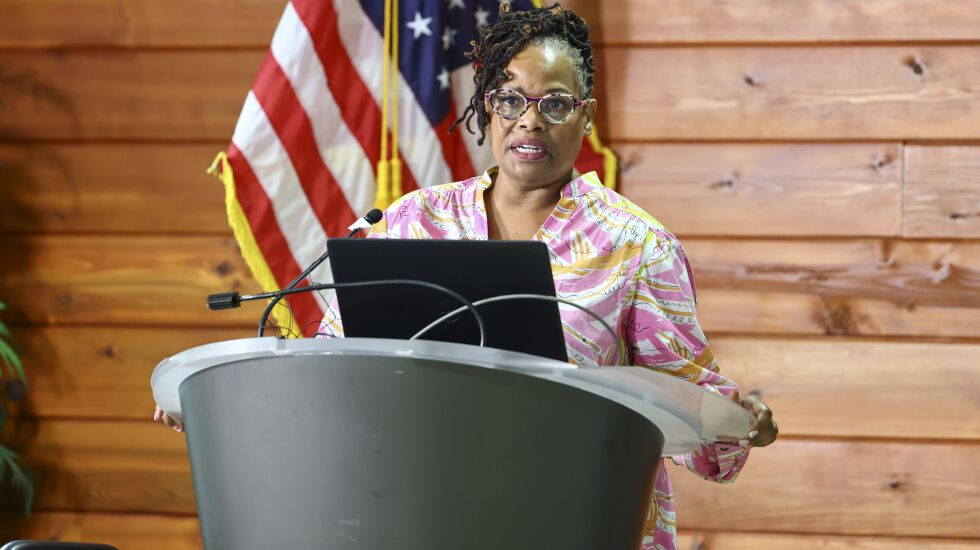
As a teen, Nedra Sims Fears once saw her family home in Chatham flood and catch fire.
As executive director of the Greater Chatham Initiative community development group for the past six years, she’s heard from residents who have had their homes flood over and over again.
More recently, her office flooded.
The flooding problem is well known in Chatham, and the South Side community has been the target of multiple attempts to fix it.
So when Fears was told that scientists wanted to do more research to help explain and reduce the flooding problem in Chatham and the surrounding area, she was skeptical.
“We don’t want to be studied to be studied,” she said. “We want results.”
Researchers at Argonne National Laboratory say they want to help South Siders understand why their communities experience perennial flooding as well as climate-related bad air quality and extreme heat.
With the aim of providing the most specific information they can, scientists on Tuesday installed monitors at Chicago State University that will measure temperature, humidity, air quality and other metrics to gauge the impact of climate change.
They also want to know how trees absorb the rain, heat and bad air. They want to find out which trees are better at the job than others. They want to understand soil, infrastructure and anything else they can piece together to fight the impact of climate change.
Chicago State is one of 21 sites that will receive various monitors over the next five years as part of a $25 million federally funded project led by Argonne.
In the spring, Argonne scientists installed measuring devices at Northeastern Illinois University on the North Side. Northwestern University, University of Chicago and University of Illinois Chicago are among other partners.

“We are taking these really granular measures to really inform decision making,” Argonne climate scientist Scott Collis said,
“We still need more measurements — not just of how much rain fell but things like how did that water drain into the soil?”
The goal is to work with communities that bear the brunt of climate change but have historically received little help with solutions.
These communities that experience extreme flooding or heat are only going to see worse conditions unless steps to respond and reduce the impacts are taken.
Climate models often take vast areas into consideration without zeroing in on very local, distinctive characteristics, Collis said. He hopes research will discover new clues.
“According to even our most advanced climate models, the city of Chicago is one uniform block, and that’s where the granularity matters,” Collis said. “How can we create a Chicago that’s more resilient to climate change?”

Brett Chase’s reporting on the environment and public health is made possible by a grant from The Chicago Community Trust.







